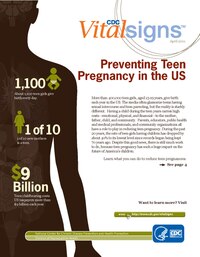
Photo from wikipedia
Background Increased support during pregnancy and early childhood is targeted at first time teenage mothers and is recommended for other vulnerable mothers in England. We used population-level healthcare data to… Click to show full abstract
Background Increased support during pregnancy and early childhood is targeted at first time teenage mothers and is recommended for other vulnerable mothers in England. We used population-level healthcare data to assess which mothers and children are most at risk of adverse health outcomes. Methods We used Hospital Episode Statistics for births to mothers aged 15–44 years in NHS hospitals in England between 2011–2014. We evaluated a number of birth, child and maternal outcomes within 24 months following birth (including birthweight, emergency hospital contacts for children, and subsequent deliveries), according to a range of maternal risk factors: age, parity, neighbourhood deprivation, history of adversity (drug/alcohol abuse, violence, self-harm), or chronic mental or physical illness identified from ICD-10 diagnosis codes in the 5 years prior to delivery. Results Of the 1,174,688 births in the study population, 61,370 (8·7%) were to first time teenage mothers, 16,675 (1·0%) were to multiparous teenage mothers, 76,245 (4·4%) were to mothers with a history of adversity, and 394,388 (23·0%) were to mothers with a mental health/behavioural chronic condition. The prevalence of risk factors generally decreased with maternal age, but the relationship between risk factors and outcomes varied according to maternal age. Compared with infants born to multiparous mothers aged 25–35 with no risk factors (‘low risk’ mothers), babies born to primiparous teenage mothers were 206 g lighter (95% CI 202–211 g) and babies born to multiparous teenage mothers were 206 g lighter (95% CI 198–215 g). Compared with children born to ‘low risk’ mothers, an additional 11·9% (95% CI 11·5–12·3%) of babies born to primiparous teenage mothers and 15·6% (95% CI 15·0–16·2%) born to mothers aged 20–24 with a history of adversity had an emergency hospital contact. Subsequent deliveries were most common in multiparous teenage mothers (21·9% for primiparous and 23·3% for multiparous teenage mothers, compared with 11·1% for ‘low risk’ mothers). When adjusting for all maternal risk factors together, mental health conditions were a strong driver of adverse outcomes. Discussion In addition to primiparous teenage mothers, multiparous teenage mothers and mothers across a range of ages with a history of adversity or mental health condition could benefit from increased support before, during and after birth. Appropriate delivery and targeting of effective interventions for these groups could help improve birth, child and maternal outcomes.
Journal Title: Journal of Epidemiology and Community Health
Year Published: 2019
Link to full text (if available)
Share on Social Media: Sign Up to like & get
recommendations!